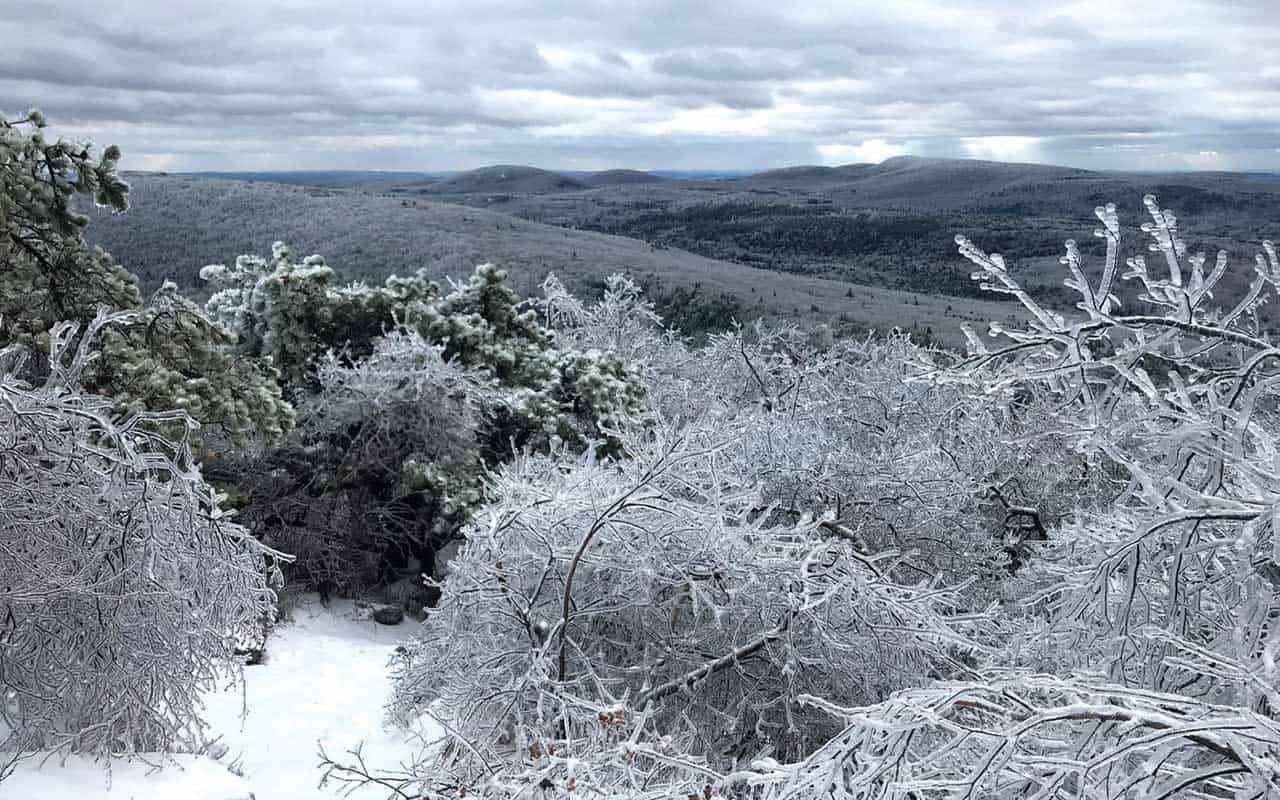Our Environment, Animal Tips & the Great Outdoors

The Trail Less Traveled
It’s a brilliant fall morning. You wake up, look out the window at the maples ablaze in yellow and decide to go for a hike. You throw a water bottle and a granola bar in a day pack, lace up your trail runners, and dash to the nearest trailhead, only to find it crammed with cars from around the Tri-state region and beyond. You park thirty yards down the road and find yourself passing people all day long. Is this what hiking is supposed to be?
That depends.
Are you a hiker or…?
Are you a hiker, or do you hike?
When the weather is nice, everyone hikes – sometimes. We go to places with easy access and known, moderate trails. The trail we choose could present a challenge and a vigorous workout, but we pretty much know what’s coming. Climb to a view, stop for a break, come back down.
The difference between going on a hike and being a hiker is exploration. Hikers will explore less popular trails in search of new views, new experiences. They will hike through ankle-deep oak leaves just to revel in the sound, and practically genuflect in a glade of pines. They might not see spectacular vistas or gushing cascades, but they can be comfortable in what Keats called “negative capability.” When trails are poorly marked or don’t resemble what’s on the map, hikers are willing to dwell in uncertainty and even confusion for their own sakes as essential components of a vital human experience.
Are you in?
Hikers will seek the mere suggestion of a trail, sometimes even bushwhacking to inaccessible summits and venturing out in torrents to experience nature in all of its varied wonder. John Muir, the quintessential hiker, rode out a thunderstorm in the top of a pine tree, howling with delight. Hikers will see rime frost and ice-sheathed branches, waterfalls that flow only during tropical storms, and the surreality of moonlit vistas. They will see deer highways tramped through deep snow and porcupines waddling along forgotten paths in the deep forest. They’ll come back muddy, wet, and cold, and smiling.
So are you in?
Here’s a tip or two to get you started…
While ours is not the most unexplored area in the world, it offers plenty of opportunities to become a hiker. A simple rule of thumb is to avoid any of the bigger trailheads and well-known byways. So skip the Appalachian Trail and opt for state forests, secondary trail systems, conservation areas, and open space. What follows will get you started, but a step-by-step trail guide kind of misses the point, don’t you think?
In Connecticut, the Mohawk State Forest is really many tracts of land scattered throughout the Northwest Corner, and the segments of the Mohawk Trail that thread through those tracts wend through some of the quietest spots in the state. While the Connecticut Walk Book is the best guide to Connecticut trails both here and throughout the state, it is not comprehensive, and visits to the various sections of the forest will offer countless opportunities to get lost in the hardwood stands and pine groves.
October Mountain and Beartown State Forests in Massachusetts offer similar havens, but much more space (16,000 and 12,000 acres respectively, compared to the tiny 4,000 of Mohawk), which means one could spend a lifetime exploring them. Even on bike, I’ve barely scratched the interior of these spaces, and both have bird’s nests of trails around ponds and through forgotten meadows.
The best long hike in the area that isn’t the Appalachian Trail is the South Taconic Trail, which now runs from Route 23 in Hillsdale, NY, to Shagroy Road in Millerton. The southern section from Millerton to Brace Mountain is a relatively recent addition that includes a deep, spring-fed pond and several panoramas of the Eastern Catskills, but also some seasonal waterfalls in less-trafficked sections.
Privacy that’s hidden in plain sight
National Scenic Trails like the Appalachian Trail and state-sponsored trails like the South Taconic Trail will attract larger crowds than local trails, so if you are looking to avoid swarms of people, look to town parks, trails, and preserves. Plenty of them are hidden in plain sight around our area, and from Dover’s Stone Church to Cornwall’s Cathedral Pines, one can, like Emily Dickinson, “keep the Sabbath […] With a Bobolink for a Chorister – And an Orchard, for a Dome.”
Or, if you want to hike around a theme, try fire towers and lookouts like Stissing Mountain in Pine Plains, NY, Laura Lookout in Stockbridge, MA, or the fire tower in Beebe State Forest in Austerlitz, NY. One could also just hike to interestingly-named locations like Seldom Seen Pond in Great Mountain Forest (CT), the Rattlesnake Preserve in Cornwall, CT, or Ice Glen Trail in Stockbridge. Whatever floats your boat, as they say, as long as it gets you outside and curious about what’s around the bend.
Town websites will sometimes give you leads to get started, often in the form of conservation trusts that have secured parcels of land for public use. There are too many to list here, but I prefer simply keeping an eye out for neglected trailhead signs or large swaths of undeveloped land. Stop by them and look for trail markings or maps, and come back with your hiking boots, backpack, and no expectations for what the area might hold. These areas are usually quiet spaces where deer abound and the trickle of a stream may be all you hear.
A note of caution: make sure you’re not trespassing on private land. Hopefully you’ll see a sign to that effect, and although my general philosophy is to go for it if you don’t see one, I suppose I shouldn’t publicly endorse that approach.
Be a prepared hiker
It is December, though, when the dwindling daylight and increasingly colder temperatures coincide with an opportunity to equip yourself or your favorite hiker with gear that’s discounted as steeply as a summit pitch. Every hiker should have a backpack that is ready to go at a moment’s notice, preferably in the back of their car. Something in the range of 25 liters provides enough room to stash additional non-cotton clothing layers, a waterproof shell, a wool hat and neck gaiter, four items that can stay in the pack at all times.
Everything else in the pack falls under the heading of “just in case”: a first aid kit, compass, matches, bandana, knife, and headlamp all may weigh you down a bit, but if you ever need them, they will be worth their weight in gold. For those who have just about everything, a low-capacity water filter such as a Lifestraw is a lightweight option for getting drinking water in a pinch, and more and more, a rechargeable fuel cell or solar-charged battery seems like a necessity for powering the phones that contain our maps. Although I favor old-fashioned paper maps and would always welcome a gift of a detailed topographic trail map, the convenience of keeping one on my phone usually outweighs digging through my collection of maps to find the one I need for a given area. A salty veteran backcountry sky instructor turned me onto the Gaia GPS app, which allows users to download topos to their phone so they can still be used outside of cell range, which is a lot of the time in any wild and scenic area.
All of this gear, however, should serve as a support for the experience of exploring. When a trail is harder or longer than we expected, or when there is no trail at all, these serve as insurance against the unexpected. And the more time we spend in places where we don’t have all the answers, the better we get at finding them on our own.



